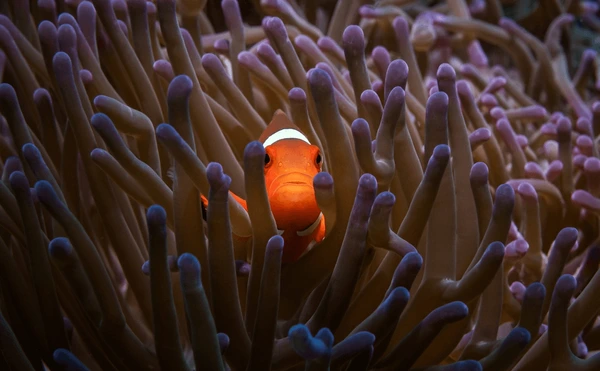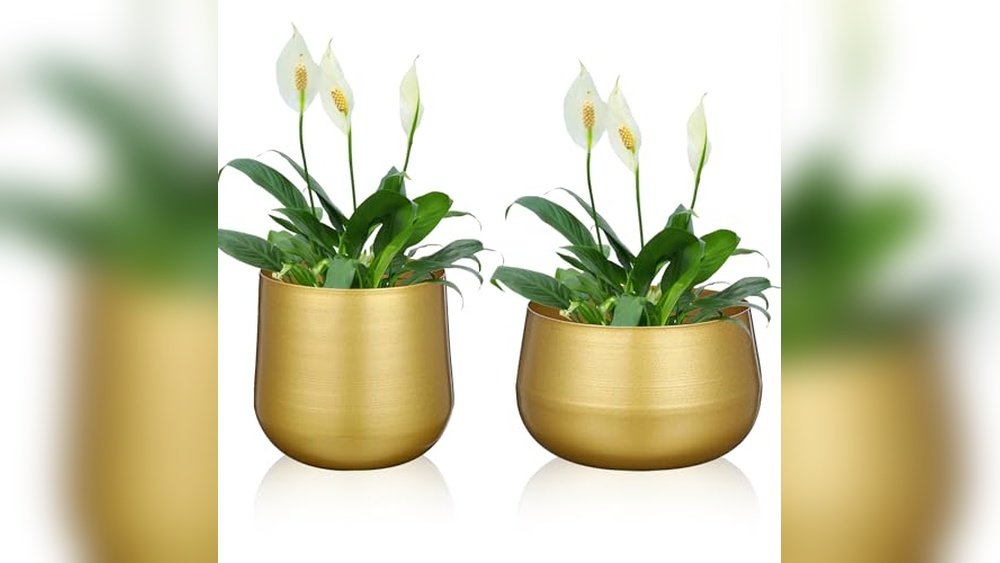If your fish seem a bit sluggish or your plants aren’t thriving, the pH level of your aquarium might be the culprit. Maintaining the right pH balance is crucial for a healthy aquatic environment, but sometimes, it can be a bit tricky.
If you’ve noticed that your tank’s pH is lower than it should be, you’re not alone. Many aquarium enthusiasts face this challenge. But here’s the good news: raising the pH in your aquarium doesn’t have to be a daunting task.
You’ll discover simple, effective methods to boost your tank’s pH levels, ensuring a thriving ecosystem for your aquatic friends. Dive in, and learn how to create the perfect underwater habitat that will make both you and your fish happy. Your aquarium’s health is in your hands, and with the right knowledge, you can make it flourish!

Credit: www.wikihow.pet
Importance Of Ph Balance
Maintaining the right pH balance in an aquarium is crucial. It ensures a healthy environment for aquatic life. Fish and plants thrive when the pH is optimal. An imbalance can cause stress and health issues. It may even lead to death.
The pH level measures acidity or alkalinity. It ranges from 0 to 14. A pH of 7 is neutral. Levels below 7 are acidic. Levels above 7 are alkaline. Each species has a preferred pH range. Keeping the right balance is essential for survival.
Changes in pH can affect oxygen levels. It can also impact nutrient absorption. Fish become stressed if the pH fluctuates. Stress weakens their immune system. It makes them prone to diseases.
Impact On Fish Health
Fish need stable pH to stay healthy. A wrong pH can cause skin irritation. It can also affect their gills. Fish may show signs of stress. They might swim erratically. Or, they may become inactive. Monitoring pH regularly is important.
Affects Plant Growth
Plants require specific pH levels to grow. A balanced pH helps nutrient uptake. It ensures robust plant growth. If pH is off, plants struggle to absorb nutrients. Growth slows down. Leaves may turn yellow or brown.
Influence On Aquarium Ecosystem
The entire ecosystem depends on pH balance. Beneficial bacteria thrive in stable pH. They help break down waste. This keeps the water clean. Changes in pH can disrupt these bacteria. Waste accumulates, harming fish and plants.

Credit: www.aqueon.com
Identifying Low Ph Levels
Maintaining the right pH level is crucial for a healthy aquarium. Fish and plants need a stable environment to thrive. Low pH can harm them. Identifying low pH levels early can prevent problems. Regular checks help keep your aquatic life safe and healthy.
Common Symptoms
Fish behavior changes with low pH. They may become stressed or lethargic. Watch for rapid gill movement or gasping at the surface. Fish may lose color or develop lesions. Plants can show signs too. Yellow or brown leaves indicate issues. Slow or stunted growth is another symptom. Regular observation helps in spotting these signs early.
Testing Methods
Use a pH test kit to check water levels. Test strips are easy to use. They provide quick results. Liquid test kits offer more accuracy. Digital pH meters are also available. They give precise readings. Test the water weekly for best results. Record the readings for future reference. Consistency is key in monitoring pH levels.
Factors Affecting Ph
Understanding the factors affecting pH in an aquarium is crucial. Proper pH levels ensure a healthy aquatic environment. Several elements influence these levels significantly. Knowing them helps maintain a balanced ecosystem.
Water Source
The water source plays a vital role in determining pH. Tap water often varies in pH levels. This depends on local treatment processes. Always test your water source before using it in your aquarium. Adjustments may be necessary to achieve the desired pH.
Aquarium Decor
Aquarium decor can alter pH levels. Rocks, gravel, and sand may release or absorb minerals. These minerals affect the water’s acidity or alkalinity. Choose decor materials carefully. Research their properties and potential impacts on pH.
Biological Load
Biological load refers to the living organisms in the aquarium. Fish, plants, and microorganisms all contribute to the pH balance. Waste from these organisms can lower pH levels. Regular cleaning and monitoring help maintain stability. A balanced biological load supports a healthy aquarium environment.
Natural Methods To Raise Ph
Maintaining the right pH in your aquarium is crucial. Fish and plants thrive in balanced water conditions. Natural methods offer a gentle way to adjust pH levels. They can be effective without harsh chemicals. Let’s explore some easy techniques.
Using Crushed Coral
Crushed coral can naturally raise pH levels. It releases calcium and carbonate into the water. These minerals help increase the pH gradually. Simply add crushed coral to your filter. Or, place it in a mesh bag inside the tank. Monitor your pH levels regularly. This method is slow but steady.
Incorporating Limestone
Limestone is another natural option to raise pH. It contains calcium carbonate. This mineral dissolves and raises pH. Place small limestone rocks in your aquarium. Position them where water flows over them. This helps the limestone dissolve effectively. Check your pH levels often. Adjust the amount of limestone as needed.
Baking Soda Techniques
Baking soda is a common household item. It can quickly raise pH levels. Dissolve a small amount in water before adding it to the tank. Start with a teaspoon for every 5 gallons. Stir the mixture well. Add it slowly to avoid shocking your fish. Always test your pH after using baking soda. Adjust the dosage if necessary.
Commercial Products For Ph Adjustment
Maintaining the right pH level in your aquarium is crucial. It ensures the health and well-being of your aquatic life. Sometimes, you may need to raise the pH level. This is where commercial products can help. These products are designed to adjust pH levels efficiently.
Ph Buffers
pH buffers are popular choices for adjusting aquarium pH levels. They stabilize the pH, preventing drastic changes. Buffers work by neutralizing acids in the water. They often contain compounds like bicarbonates and carbonates. These compounds help maintain a consistent pH level.
Using pH buffers is simple. Add the recommended amount to your aquarium water. It is important to follow the instructions carefully. This ensures safe and effective pH adjustment.
Liquid Solutions
Liquid solutions offer another method for pH adjustment. They are easy to use and quick to work. You pour the solution directly into the water. Many brands offer liquid solutions for pH adjustment. Each product has specific instructions for use.
Liquid solutions often contain concentrated chemicals. These chemicals alter the water’s pH level. They provide a fast response to pH changes. Always monitor your aquarium after using liquid solutions. This helps ensure the pH remains stable.
Best Practices For Ph Stability
Maintaining a stable pH in your aquarium is essential. It ensures the health of aquatic life. Sudden changes in pH levels can stress or harm fish and plants. Implementing best practices for pH stability can prevent these issues. Regular monitoring, gradual adjustments, and consistent maintenance are key strategies.
Regular Monitoring
Check the pH levels frequently. Use a reliable test kit. Regular checks help you catch any sudden changes early. This allows timely interventions. Record the readings in a log. This helps you track trends over time. Knowing the normal range of your aquarium is vital. It helps in identifying potential problems. Regular monitoring keeps your aquatic environment safe.
Gradual Adjustments
Avoid making quick changes to the pH. Sudden shifts can shock the fish. Instead, make gradual adjustments. Use natural methods, like adding limestone. This can help increase pH slowly. Chemical solutions should be used carefully. Always follow the instructions. Check pH after any changes. This ensures levels remain stable. Gradual adjustments prevent stress in aquatic life.
Consistent Maintenance
Maintain regular water changes. This helps keep pH levels stable. Remove debris and waste from the tank. Clean the filters frequently. These actions prevent harmful buildup. Stable pH requires consistent care. Monitor the tank’s temperature. It influences pH levels. Use quality water sources. Poor water quality can affect pH. Consistent maintenance ensures a healthy aquarium.
Understanding Fish Requirements
Understanding fish requirements is crucial for maintaining a healthy aquarium. Each fish species has unique needs. These needs include water pH levels. Knowing these requirements helps you create a suitable environment. It ensures your fish thrive and stay healthy.
Species-specific Needs
Different fish species have varying pH needs. Tropical fish often prefer slightly acidic water. Goldfish thrive in neutral to slightly alkaline conditions. Research your fish species’ pH preferences. This information guides you in adjusting the aquarium’s pH. Proper pH levels reduce stress and prevent illnesses.
Compatibility Considerations
Mixing fish species requires careful planning. Some fish tolerate a wider pH range. Others need specific levels to stay healthy. Compatibility affects their well-being. Grouping compatible fish reduces conflict and stress. Check compatibility before adding new fish to your aquarium. This ensures a harmonious aquatic environment.

Credit: www.youtube.com
Preventing Ph Fluctuations
Maintaining a stable pH level in an aquarium is crucial. Fluctuating pH can stress fish and harm plants. Preventing these fluctuations involves understanding and managing the water conditions. Consistent care and attention ensure a healthy aquatic environment.
Routine Checks
Regularly test your aquarium’s pH levels. Use a reliable pH test kit. These tests should be done weekly. Early detection helps manage changes before they become problems. Record the results to track patterns. This helps in understanding the aquarium’s natural cycle.
Water Change Strategies
Changing water regularly helps maintain pH balance. Aim for consistent water changes. Removing old water and adding new keeps conditions stable. Use dechlorinated water to avoid chemical imbalances. Monitor pH after each change. This ensures the new water doesn’t disrupt the balance.
Frequently Asked Questions
What Causes Low Ph In Aquariums?
Low pH in aquariums can result from several factors, including excess carbon dioxide, high levels of organic waste, and certain substrates. These conditions can create an acidic environment. Regular monitoring and maintenance are crucial to prevent pH imbalance, ensuring a healthy habitat for your aquatic life.
How Can I Safely Raise Ph Levels?
To safely raise pH levels, use natural methods like adding crushed coral, limestone, or baking soda. These materials gradually increase alkalinity. Always make changes slowly to avoid stressing fish. Test water frequently to monitor pH adjustments and maintain optimal conditions for your aquarium inhabitants.
Is Baking Soda Safe For Aquariums?
Yes, baking soda is safe for aquariums when used properly. It can effectively raise pH by increasing water alkalinity. Dissolve it in water before adding to the tank. Always use small amounts and test pH levels regularly to ensure safe and stable conditions for your fish.
Can Aquarium Plants Affect Ph Levels?
Yes, aquarium plants can influence pH levels. Through photosynthesis, plants consume carbon dioxide, which can increase pH. At night, they release CO2, potentially lowering pH. A balance of light and plant density can help maintain stable pH levels, benefiting both plants and aquatic life.
Conclusion
Maintaining the right pH in your aquarium is crucial. Fish thrive in balanced environments. Monitor the water regularly for stability. Use natural solutions like crushed coral or limestone. They can gradually raise pH levels. Avoid sudden changes to prevent stress.
Be patient and observe your fish’s behavior. Happy fish indicate a healthy aquarium. Consult experts if unsure about adjustments. Keep learning and experimenting for best results. Remember, every aquarium is unique. What works for one may differ for another. Trust your instincts and enjoy the beauty of a well-balanced tank.







